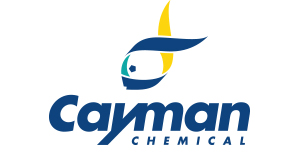Asialoglycoprotein Receptor 1 Rabbit Monoclonal Antibody (Clone 021)
Asialoglycoprotein Receptor 1 Rabbit Monoclonal Antibody (Clone 021)
Artikelnummer
CAY38103-100
Verpackungseinheit
100 µl
Hersteller
Cayman Chemical
Verfügbarkeit:
wird geladen...
Preis wird geladen...
Quote the promo code SZANTIBODY when ordering to receive a 10% discount on this antibody, from October 1st to December 31st 2024. No additional discounts during the promo.
Formulation: 50, 100 µl, or 1 ml of protein A-affinity purified monoclonal antibody
Immunogen: Recombinant human asialoglycoprotein receptor 1
Clone Designation: 21
Shelf life (days): 365
Notes: Asialoglycoprotein receptor 1 is a calcium-dependent C-type lectin receptor.{65591} It is composed of a carbohydrate recognition domain, which primarily recognizes galactosides such as D-galactose and N-acetyl-D-galactosamine (GalNAc), stalk region, transmembrane domain, and cytoplasmic domain. Asialoglycoprotein receptor 1 is expressed in hepatocytes and alternative splicing produces both long and short isoforms.{65592} The long isoform localizes to the cell membrane, while the short isoform exists as a soluble form that is both secreted and found in the cytoplasm. The asialoglycoprotein receptor is a trimer that is commonly formed by two H1 subunits and one H2 subunit.{65591} It is involved in the clearance of desialylated serum glycoproteins and hepatotropic virus entry via endocytosis. Ectopic expression of the gene encoding asialoglycoprotein receptor 1 (ASGR1) increases binding of hepatitis E virus to cells in vitro.{65593} Knockdown of ASGR1 increases survival and decreases liver injury and plasma TNF-α and IL-1β levels in a mouse model of sepsis.{65594} Decreased protein levels of asialoglycoprotein receptor 1 negatively correlate with hepatocellular carcinoma tumor grade.{65595} The asialoglycoprotein receptor has been used as a target of galactosylated drug conjugates and various lipid-based drug delivery (LBDD) platforms, including lipid nanoparticles (LNPs), liposomes, and micelles, for therapeutic and imaging applications.{65591} Cayman’s Asialoglycoprotein Receptor 1 Rabbit Monoclonal Antibody (Clone 021) can be used for ELISA (capture), immunoprecipitation (IP), and Western blot (WB) applications. The antibody recognizes asialoglycoprotein receptor 1 at 33 kDa from human samples. However, due to lipidation, glycation, and phosphorylation the antibody may recognize asialoglycoprotein receptor 1 at approximately 45-50 kDa.
| Artikelnummer | CAY38103-100 |
|---|---|
| Hersteller | Cayman Chemical |
| Hersteller Artikelnummer | 38103-100 |
| Verpackungseinheit | 100 µl |
| Mengeneinheit | STK |
| Reaktivität | Human |
| Klonalität | Monoclonal |
| Methode | Immunoprecipitation, Western Blotting, ELISA |
| Isotyp | IgG |
| Wirt | Rabbit |
| Konjugat | Unconjugated |
| Produktinformation (PDF) | Download |
| MSDS (PDF) |
|

 English
English







